GASH: an improved algorithm for maximizing the number of equivalent residues between two protein structures
- PMID: 16146579
- PMCID: PMC1239909
- DOI: 10.1186/1471-2105-6-221
GASH: an improved algorithm for maximizing the number of equivalent residues between two protein structures
Abstract
Background: We introduce GASH, a new, publicly accessible program for structural alignment and superposition. Alignments are scored by the Number of Equivalent Residues (NER), a quantitative measure of structural similarity that can be applied to any structural alignment method. Multiple alignments are optimized by conjugate gradient maximization of the NER score within the genetic algorithm framework. Initial alignments are generated by the program Local ASH, and can be supplemented by alignments from any other program.
Results: We compare GASH to DaliLite, CE, and to our earlier program Global ASH on a difficult test set consisting of 3,102 structure pairs, as well as a smaller set derived from the Fischer-Eisenberg set. The extent of alignment crossover, as well as the completeness of the initial set of alignments are examined. The quality of the superpositions is evaluated both by NER and by the number of aligned residues under three different RMSD cutoffs (2,4, and 6A). In addition to the numerical assessment, the alignments for several biologically related structural pairs are discussed in detail.
Conclusion: Regardless of which criteria is used to judge the superposition accuracy, GASH achieves the best overall performance, followed by DaliLite, Global ASH, and CE. In terms of CPU usage, DaliLite CE and GASH perform similarly for query proteins under 500 residues, but for larger proteins DaliLite is faster than GASH or CE. Both an http interface and a simple object application protocol (SOAP) interface to the GASH program are available at http://www.pdbj.org/GASH/.
Figures

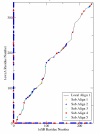

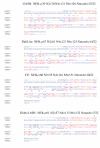
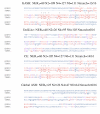
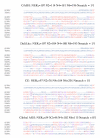




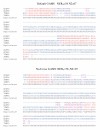
Similar articles
-
Detecting local structural similarity in proteins by maximizing number of equivalent residues.Proteins. 2004 Nov 1;57(2):381-91. doi: 10.1002/prot.20211. Proteins. 2004. PMID: 15340925
-
The iRMSD: a local measure of sequence alignment accuracy using structural information.Bioinformatics. 2006 Jul 15;22(14):e35-9. doi: 10.1093/bioinformatics/btl218. Bioinformatics. 2006. PMID: 16873492
-
MUSTANG: a multiple structural alignment algorithm.Proteins. 2006 Aug 15;64(3):559-74. doi: 10.1002/prot.20921. Proteins. 2006. PMID: 16736488
-
Accuracy of structure-based sequence alignment of automatic methods.BMC Bioinformatics. 2007 Sep 20;8:355. doi: 10.1186/1471-2105-8-355. BMC Bioinformatics. 2007. PMID: 17883866 Free PMC article.
-
[Comparative analysis of primary structure of nucleic acids and proteins].Mol Biol (Mosk). 2004 Jan-Feb;38(1):92-103. Mol Biol (Mosk). 2004. PMID: 15042839 Review. Russian.
Cited by
-
Protein Data Bank Japan (PDBj): updated user interfaces, resource description framework, analysis tools for large structures.Nucleic Acids Res. 2017 Jan 4;45(D1):D282-D288. doi: 10.1093/nar/gkw962. Epub 2016 Oct 26. Nucleic Acids Res. 2017. PMID: 27789697 Free PMC article.
-
Pseudomonas aeruginosa Expresses a Functional Human Natriuretic Peptide Receptor Ortholog: Involvement in Biofilm Formation.mBio. 2015 Aug 25;6(4):e01033-15. doi: 10.1128/mBio.01033-15. mBio. 2015. PMID: 26307165 Free PMC article.
-
Investigation on substrate specificity and catalytic activity of serine protease neuropsin.Biophys Physicobiol. 2022 Sep 22;19:e190040. doi: 10.2142/biophysico.bppb-v19.0040. eCollection 2022. Biophys Physicobiol. 2022. PMID: 36349321 Free PMC article.
-
ASH structure alignment package: sensitivity and selectivity in domain classification.BMC Bioinformatics. 2007 Apr 4;8:116. doi: 10.1186/1471-2105-8-116. BMC Bioinformatics. 2007. PMID: 17407606 Free PMC article.
-
Chemogenomic approaches to rational drug design.Br J Pharmacol. 2007 Sep;152(1):38-52. doi: 10.1038/sj.bjp.0707307. Epub 2007 May 29. Br J Pharmacol. 2007. PMID: 17533416 Free PMC article. Review.
References
Publication types
MeSH terms
Substances
LinkOut - more resources
Full Text Sources
Research Materials
Miscellaneous

